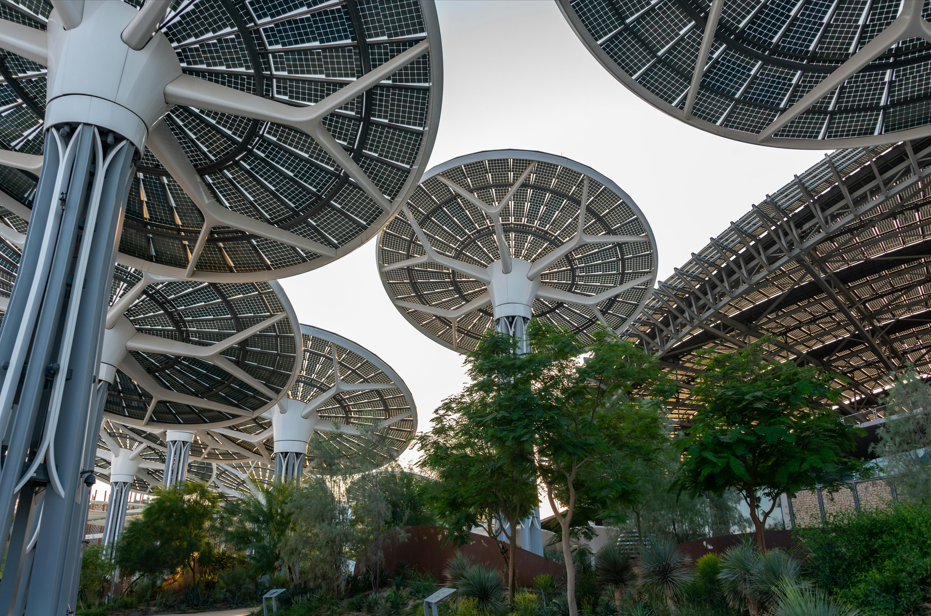Industrialisation and urbanisation have long been synonymous with vast quantities of steel. Iron, steel’s precursor, fuelled the Industrial Revolution beginning in 1750, leading to the creation of complex machinery and rail systems. Further advancements in refining processes gave rise to steel, which in turn ignited the Second Industrial Revolution.
It is no secret that the modern global economy is propped up and held firm by steel. Virtually all production processes involve steel, as do the construction processes for the very factories in which these take place. For MENA countries undertaking transformative shifts away from oil dependency towards diversified industries, steel is undoubtedly a cornerstone of progress.
However, the steel industry has traditionally been infamous for its environmental impact. Failure to address these concerns could undermine the MENA region’s transition to a more sustainable economic model. What is the state of the steel industry in the region, and how can it become more sustainable?
The State of the Industry
The MENA steel industry began to take shape in earnest during the 20th century, paralleling the region’s rapid urbanisation and industrialisation. Initially, growth was concentrated in Egypt, Syria, and Jordan. From the 1970s onwards, the Arabian Peninsula began to dominate the regional steel sector.
During this period of intense urban expansion, particularly in nations like the UAE, Qatar, Oman, and Saudi Arabia, steel imports sufficed to meet demand as local industrial bases had not yet developed. This was largely sustainable at the time due to hydrocarbon revenues driving economic growth.
The 2000s saw Saudi Arabia and the UAE gradually establish the infrastructure and expertise required for local steel production. Today, demand continues to grow, with the Gulf Cooperation Council (GCC) countries reporting an average annual growth of 6% and North Africa at 4%.
In 2024 alone, the GCC experienced a 12% increase in steel production during the first quarter, while Saudi Arabia’s output grew by 9%, driven by construction booms and government-led infrastructure projects. Egypt, too, recorded a 14.7% rise during the same period.
These statistics show that the steel trade in the region is on rise, making steel yet another viable industry for economic growth that can join others as a set to gradually replace the over dependency on hydrocarbons.
Most Viable Technologies
Reducing the environmental impact of steel production requires adopting advanced technologies, such as hydrogen-based production and electric arc furnaces powered by renewable energy.
The first technological approach that is mentionable for Middle Eastern producers is hydrogen-based steel production. During the production of steel, reducing agents are critical when separating oxygen from iron ore to produce metallic iron down to the chemical level.
In traditional steelmaking, coke—produced by heating coal in an oxygen-free environment—is used as a reducing agent to extract metallic iron from ore. This process emits significant quantities of carbon dioxide and carbon monoxide, with 1.4 to 1.85 tonnes of CO₂ produced per tonne of steel. The regularity and the permanent demand of steel production make its carbon footprint a force to be reckoned with.
Hydrogen-based steel production offers a cleaner alternative. By using hydrogen as a reducing agent, carbon emissions are replaced with water vapour. MENA producers are well-positioned to take advantage of this, leveraging both their abundant natural gas reserves and ongoing investments in green hydrogen projects. For instance, the UAE’s Masdar and EMSTEEL have completed a successful proof-of-concept for hydrogen-based steel production, signalling promising developments.
“The Abu Dhabi-based pilot project, developed in partnership with Masdar, is the first-of-its-kind in the Middle East and North Africa region. The project is now fully operational and has successfully commenced the production of green steel,” an EMSTEEL spokesperson told ESG Mena.
Electric arc furnaces (EAFs) powered by renewable energy also offer significant environmental benefits. These furnaces melt recycled steel at temperatures exceeding 3,000°C, with impurities removed during refining. Saudi Arabia and Bahrain have already invested in EAF technology, with Bahrain’s Sulb upgrading its capabilities to improve efficiency and sustainability.
EMSTEEL has also pioneered an AI-led Green Steel Monitoring & Certification System, allowing for emissions tracking at the heat level and blockchain-enabled traceability. “This system ensures greater transparency and accountability in the steel industry, providing a digital wallet for carbon credits,” the company explained.
Future goals
The most structured sustainability frameworks in the region are Saudi Vision 2030 and the UAE Energy Strategy 2050. As part of its Neom project, Saudi Arabia is developing large-scale hydrogen projects for steel production and exploring carbon capture systems.
The UAE has been a regional leader in carbon capture for steel production, but progress remains modest. Its only commercial-scale carbon capture project for steel managed to capture just 26.6% of emissions in 2023.
However, Middle Eastern geology offers advantages, with saline aquifers and depleted oil and gas fields at depths exceeding 800 metres providing ideal sites for carbon storage. Proximity to industrial hubs such as Jubail in Saudi Arabia, Ruwais in the UAE, and Ras Laffan in Qatar further reduces costs for carbon capture and storage infrastructure.
“We have signed an agreement with Modon to promote sustainability in the UAE’s construction sector through the use of green steel. This initiative will make Modon the first real estate developer in the UAE to incorporate green steel into its projects, fully aligning with the Net-Zero 2050 Strategy,” EMSTEEL confirmed.
For now, sustainability efforts in the steel sector rely on a combination of technologies and broader strategies. Although hydrogen-based and green steel technologies remain expensive, ongoing innovation is expected to reduce costs and improve efficiency.
Balancing Growth and Sustainability
The Middle East is well-placed to pioneer sustainable steel production. Decades of industrial development have enabled many nations to transition from being importers to exporters of steel.
Recent advancements in sustainable production come at a crucial time. Middle Eastern producers could gain a competitive edge by exporting low-carbon steel to the EU, which plans to impose carbon taxes on high-emission imports, including steel, from 2026.
According to Soroush Basrat, an analyst at the Institute for Energy Economics and Financial Analysis, the MENA steel industry can currently use low-emission technologies to comply with EU carbon tax regulations, but switching to hydrogen will be the only way to secure a sizable portion of the European market in the upcoming years.
The coming years will determine how effectively MENA states can balance industrial growth with sustainability.
By: Omar Ahmed



